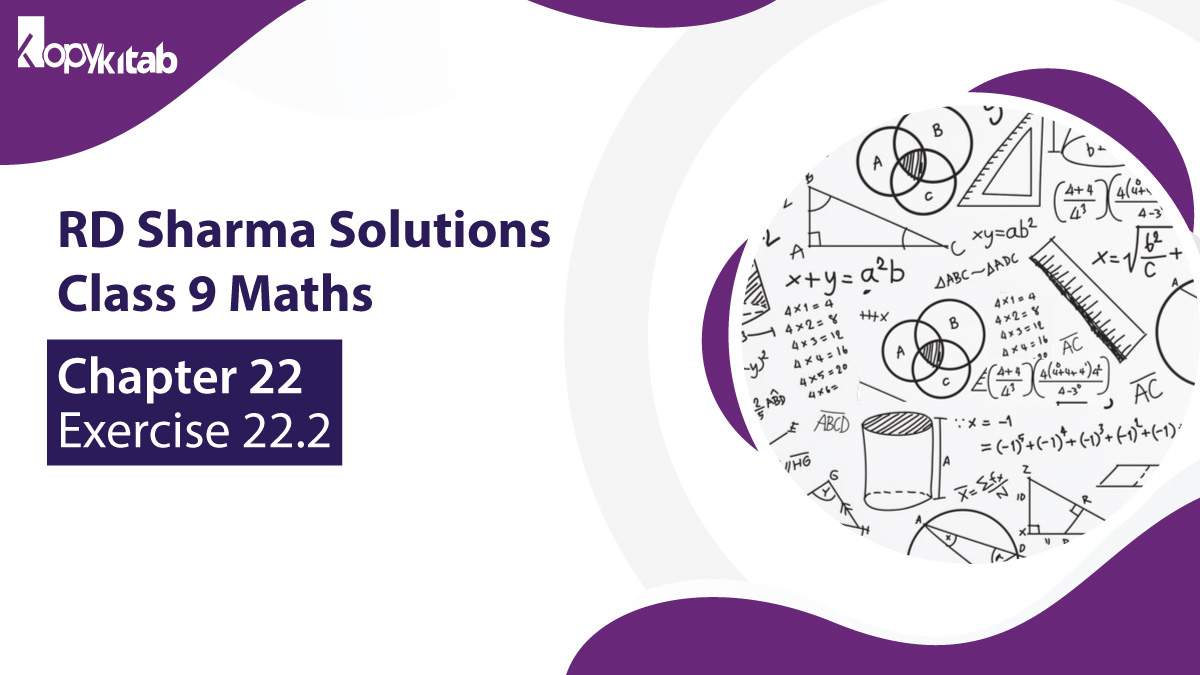RD Sharma Chapter 22 Class 9 Maths Exercise 22.2 Solutions is available now for the students. These solutions provided here for the class 9th students under the CBSE board have been prepared, keeping the present syllabus under the CBSE board in mind. It means these solutions can be extremely useful for the aspirants preparing for the examination. One can expect to score good marks upon practicing these questions as one can expect a very similar set of questions in the final examination.
Before going for the RD Sharma Solutions for Class 9 Maths Chapter 22 Tabular Representation of Statistical Data Exercise 22.2, one needs to have clarity on – Cumulative frequency distribution. Questions in this exercise revolve around this concept. Here the students can get to know the modes of developing a cumulative frequency distribution table, where a set of data is provided.
At the same time, solving the questions, these solutions can be helpful in terms of clearing the concepts of the students as well. Here the students can get greater clarity about the overall frequency distribution. It means those already having clarity over these concepts can find more confidence while exercising the questions.
Learn about Class 9 Chapter 22 (Measure of Central Tendency)
Download RD Sharma Chapter 22 Class 9 Maths Exercise 22.2 Solutions PDF
Solutions for Class 9 Maths Chapter 22 Tabular Representation of Statistical Data Exercise 22.2
Important Definitions RD Sharma Chapter 22 Class 9 Maths Exercise 22.2 Solutions
In a set of data or remarks, the cumulative frequency is used to plan the number of observations that lie over a specific observation. To calculate the cumulative frequency for a particular observation, the observation frequency is added to the total of frequencies of its predecessors. The last observation’s cumulative frequency is the total of all the frequencies of the complete data set.
Examples of RD Sharma Chapter 22 Class 9 Maths Exercise 22.2 Solutions
Ques- Following are the ages of the 360n patients getting medical treatment in a hospital on a day. Construct a cumulative frequency distribution from the below table.
|
Age (in years) |
Number of Patients |
|
10-20 |
90 |
|
20-30 |
50 |
|
30-40 |
60 |
|
40-50 |
80 |
|
50-60 |
50 |
|
60-70 |
30 |
Solution- The ages of the 360 patients are mentioned below-
|
Ages (in a year) |
Frequency(f) |
Cumulative Frequency |
|
10-20 |
90 |
90 |
|
20-30 |
50 |
140 |
|
30-40 |
60 |
200 |
|
40-50 |
80 |
280 |
|
50-60 |
50 |
330 |
|
60-70 |
30 |
360 |
Ques- The points scored by 55 students in a test are given below:
|
Marks |
Number of Students |
|
0-5 |
2 |
|
5-10 |
6 |
|
10-15 |
13 |
|
15-20 |
17 |
|
20-25 |
11 |
|
25-30 |
4 |
|
30-35 |
2 |
Make a cumulative frequency table.
Solution– Cumulative frequency table from the provided data:
|
Marks |
Number of Students |
Marks |
Cumulative Frequency |
|
0-5 |
2 |
Less than 5 |
2 |
|
5-10 |
6 |
Less than 10 |
8 |
|
10-15 |
13 |
Less than 15 |
21 |
|
15-20 |
17 |
Less than 20 |
38 |
|
20-25 |
11 |
Less than 25 |
49 |
|
25-30 |
4 |
Less than 30 |
53 |
|
30-35 |
2 |
Less than 35 |
55 |
|
– |
N= 55 |
– |
– |
Frequently Asked Questions of RD Sharma Chapter 22 Class 9 Maths Exercise 22.2 Solutions
Ques- Define cumulative frequency distribution.
Ans- A table that illustrates how cumulative frequencies are distributed over several classes.
Ques- Describe the difference between a frequency distribution and a cumulative frequency distribution.
Ans- The frequency distribution is a way to represent raw data in the form from which one can clearly understand the information included in raw data, where a table that plays how cumulative frequencies are distributed over several classes is called a cumulative frequency distribution.
